air traffic controllers
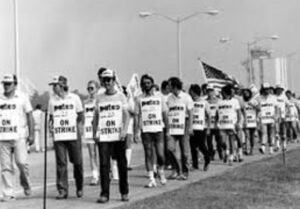 There are some jobs from which people really cannot strike. To many lives are at stake. One such job is that of air-traffic controllers, nevertheless, on August 3, 1981, almost 13,000 air-traffic controllers went on strike after negotiations with the federal government designed to raise air-traffic controller pay and shorten their workweek failed. In the complaint, the controllers sited difficult working conditions and a lack of recognition of the pressures they face as major issues they were facing. When the strike began, some 7,000 flights across the country, had to be canceled. It was a major disaster in the United States. Air travel was a vital part of American life.
There are some jobs from which people really cannot strike. To many lives are at stake. One such job is that of air-traffic controllers, nevertheless, on August 3, 1981, almost 13,000 air-traffic controllers went on strike after negotiations with the federal government designed to raise air-traffic controller pay and shorten their workweek failed. In the complaint, the controllers sited difficult working conditions and a lack of recognition of the pressures they face as major issues they were facing. When the strike began, some 7,000 flights across the country, had to be canceled. It was a major disaster in the United States. Air travel was a vital part of American life.
President Reagan immediately called the strike illegal and stated that he 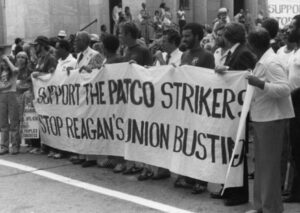 would fire any controller who had not returned to work within 48 hours. Robert Poli who was the president of the Professional Air-Traffic Controllers Association (PATCO) at that time, was found in contempt by a federal judge and ordered to pay $1,000 a day in fines. The air-traffic controllers still had not returned to work on August 5, 1981, so President Ronald Reagan began firing 11,359 air-traffic controllers striking in violation of his order for them to return to work. The executive action was regarded as extreme by many and significantly slowed air travel for months. Nevertheless, President Reagan did what he needed to do. There are certain occupations that require continued, loyal work, even during a dispute.
would fire any controller who had not returned to work within 48 hours. Robert Poli who was the president of the Professional Air-Traffic Controllers Association (PATCO) at that time, was found in contempt by a federal judge and ordered to pay $1,000 a day in fines. The air-traffic controllers still had not returned to work on August 5, 1981, so President Ronald Reagan began firing 11,359 air-traffic controllers striking in violation of his order for them to return to work. The executive action was regarded as extreme by many and significantly slowed air travel for months. Nevertheless, President Reagan did what he needed to do. There are certain occupations that require continued, loyal work, even during a dispute.
.
An angry President Reagan carried out his threat that August day, and the federal government began firing the 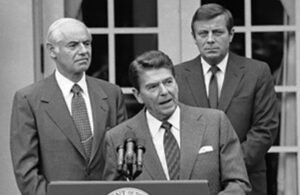 11,359 air-traffic controllers who had not returned to work. In addition, he declared a lifetime ban on the rehiring of the strikers by the Federal Aviation Administration (FAA). They made their choice and our president made good on the repercussions, and they got no second changes. Air travel slowed to a crawl, but on August 17, the FAA began accepting applications for new air-traffic controllers, and on October 22 the Federal Labor Relations Authority decertified PATCO. These new air-traffic controllers needed to know just how important their job was and that even in a dispute, they went to work. To my knowledge, a strike of the air-traffic controllers has never happened again.
11,359 air-traffic controllers who had not returned to work. In addition, he declared a lifetime ban on the rehiring of the strikers by the Federal Aviation Administration (FAA). They made their choice and our president made good on the repercussions, and they got no second changes. Air travel slowed to a crawl, but on August 17, the FAA began accepting applications for new air-traffic controllers, and on October 22 the Federal Labor Relations Authority decertified PATCO. These new air-traffic controllers needed to know just how important their job was and that even in a dispute, they went to work. To my knowledge, a strike of the air-traffic controllers has never happened again.
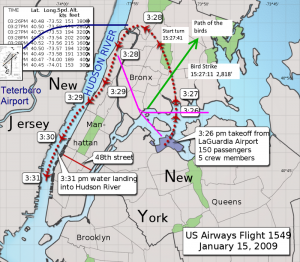 On January 15, 2009, the whole world was captivated by the story of a miracle on the Hudson River. A pilot named Captain Chesley Burnett Sullenberger III, affectionately known as Sully, averted disaster after an unusual bird strike…meaning a flock of geese hit his plane, disabling both engines. Hitting a bird isn’t so uncommon, but to hit a flock can bring down a plane, and that was the situation Sully found himself in as he piloted US Airways Flight 1549 out of La Guardia Airport that morning. Just 60 seconds after takeoff, the horrific strike occurred.
On January 15, 2009, the whole world was captivated by the story of a miracle on the Hudson River. A pilot named Captain Chesley Burnett Sullenberger III, affectionately known as Sully, averted disaster after an unusual bird strike…meaning a flock of geese hit his plane, disabling both engines. Hitting a bird isn’t so uncommon, but to hit a flock can bring down a plane, and that was the situation Sully found himself in as he piloted US Airways Flight 1549 out of La Guardia Airport that morning. Just 60 seconds after takeoff, the horrific strike occurred.
Sully, a former fighter pilot with decades of flying experience, knew he was in a lot of trouble. After trying to restart the engines…a plan that failed, he made the mayday call. When air traffic controllers instructed the seasoned pilot to head for nearby Teterboro Airport, he calmly informed them that he was “unable” to reach a runway. “We’re gonna be in the Hudson,” he said simply, and then told the 150 terrified passengers and five crew members on board to brace for impact. I’m sure there were those who thought he should have tried for the airport, but if he had, he would have flown his plane into the buildings that were in the way. They had no chance of making it to Teterboro or back to La Guardia.
I’m sure the air traffic controllers and the passengers all thought that they had no chance of survival in the Hudson River either, but they were wrong. Ninety seconds later, Captain Sully quietly glided his Airbus 320 over the George Washington Bridge and onto the Hudson River midway between Manhattan and New Jersey. The flight attendants quickly instructed the passengers to put on life jackets and head for the exits over the wings. In minutes, 150 passengers and 5 crew members found themselves standing in ankle to knee deep river water on the wings of the plane that had, only moments before, been flying gracefully over the Hudson.
Of course, a commercial airliner can’t land on the busy Hudson River unnoticed. Immediately, the commuter ferries, sightseeing boats, and rescue vessels raced to the scene to pluck the frightened passengers fro a potential watery grave. The landing was so smooth that there were only two broken ribs, and minor injuries or hypothermia. One survivor suffered two broken legs and others were treated for minor injuries or hypothermia, but no fatalities occurred. After walking up and down the aisle twice to ensure a complete evacuation, Sullenberger was the last to leave the sinking plane. There were no fatalities, a concern that Sully took very seriously. He simply could not take a deep breath until he was told that all 155 souls had survived. For his actions, Sully received a slew of honors for his actions, including an invitation to Barack Obama’s presidential inauguration and resolutions of praise from the U.S. Congress.
Sully was now famous, with all that went with it, but he felt the need to retire, and find what really mattered to 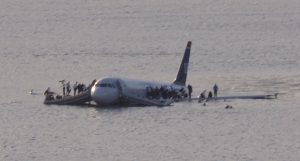 him. Yes, he would always be thankful that all 155 souls on US Airways Flight 1549 had survived, and they would always be grateful to him for having the skill to land safely in the Hudson, but he needed to focus on his family and his future. I don’t think he was afraid to fly anymore, but he just needed to get his priorities straight. Sully published a book about his childhood, military background and career entitled “Highest Duty: My Search for What Really Matters.” He retired from US Airways after 30 years in the airline industry on March 3, 2010, and has since devoted his time to consulting, public speaking and advocating for aviation safety.
him. Yes, he would always be thankful that all 155 souls on US Airways Flight 1549 had survived, and they would always be grateful to him for having the skill to land safely in the Hudson, but he needed to focus on his family and his future. I don’t think he was afraid to fly anymore, but he just needed to get his priorities straight. Sully published a book about his childhood, military background and career entitled “Highest Duty: My Search for What Really Matters.” He retired from US Airways after 30 years in the airline industry on March 3, 2010, and has since devoted his time to consulting, public speaking and advocating for aviation safety.

